a sound installation that uses the walls of the gallery as a resonating body.
wood, zither pins, bass strings, timing belts, stepper motors, arduino microcontrollers, custom circuit.
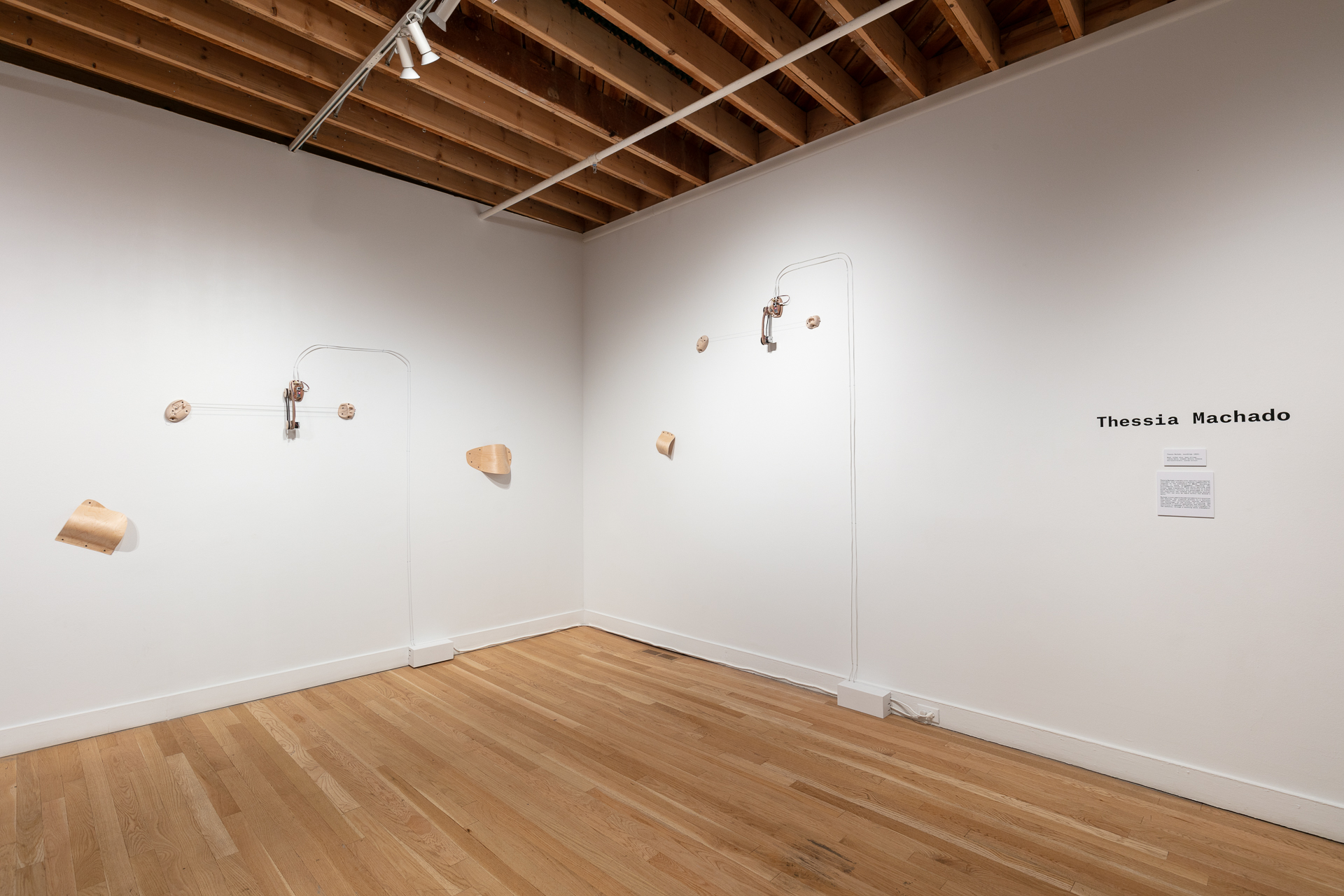
A set of wall-mounted, deconstructed bass instruments is activated by arduino-driven motorized bows.
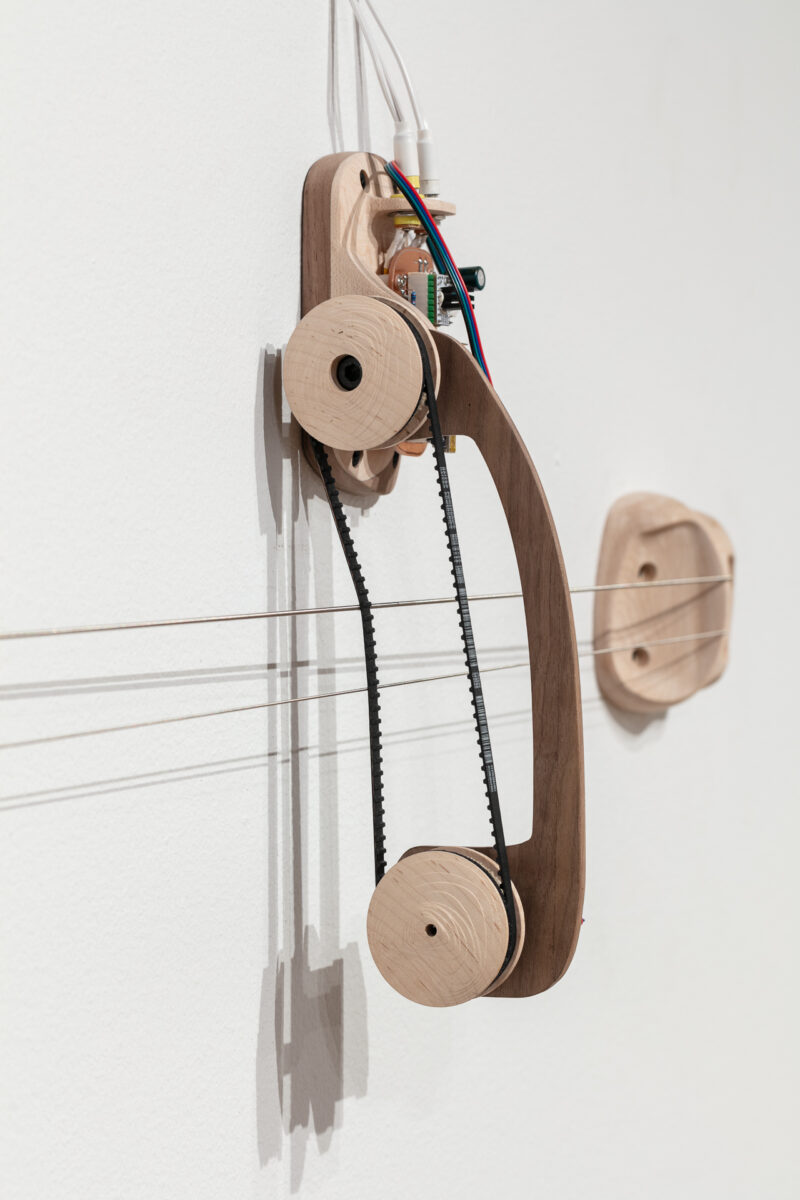
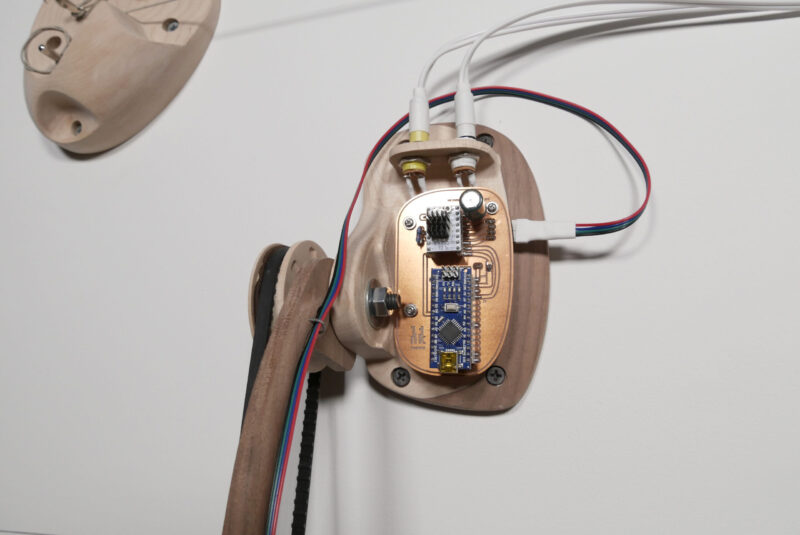
Solid maple heads and bridges (the structures that hold the strings) transmit the sound vibrations directly to the wall of the gallery.
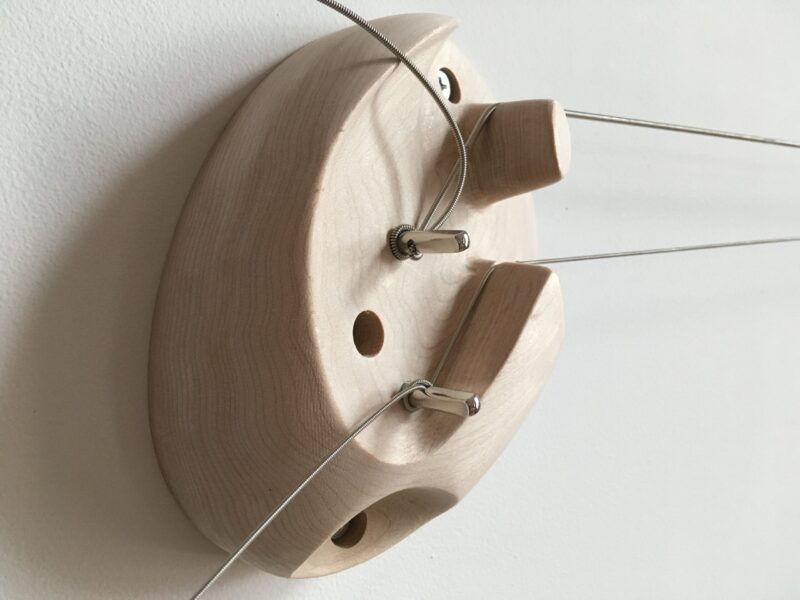
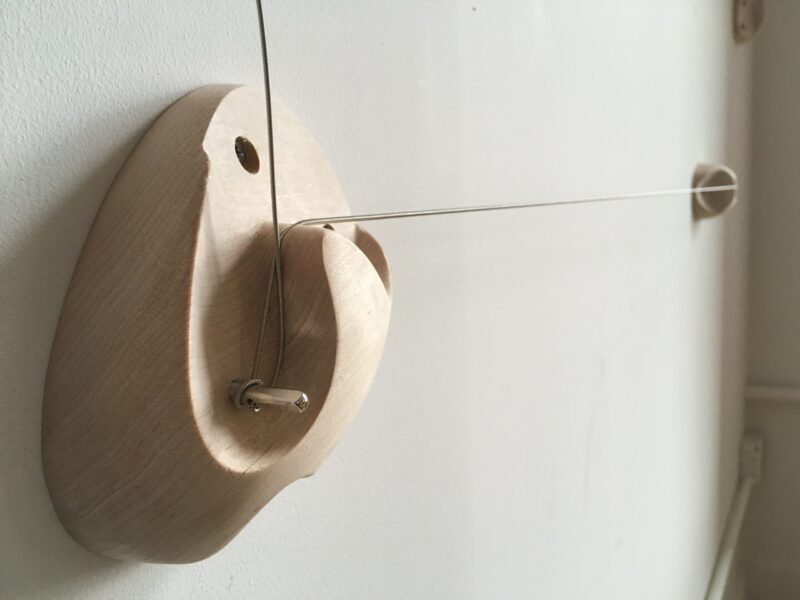
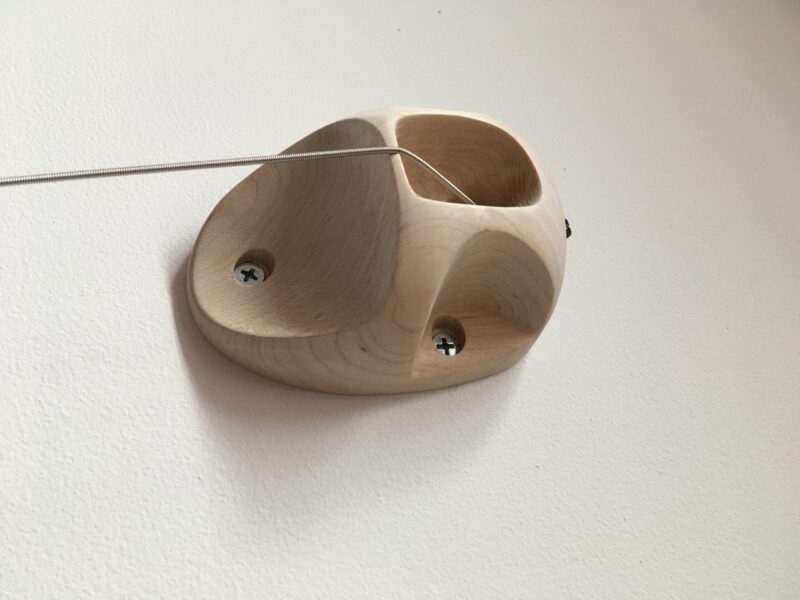
The space behind the surface (sheetrock, plywood) helps the material resonate and amplify the sound.
The entire gallery becomes the body of the instrument. Its sound is colored by the materials and architectural character of the installation at BMoCA. The total sum of materials and their placement in the space will determine the timbre of the sound.
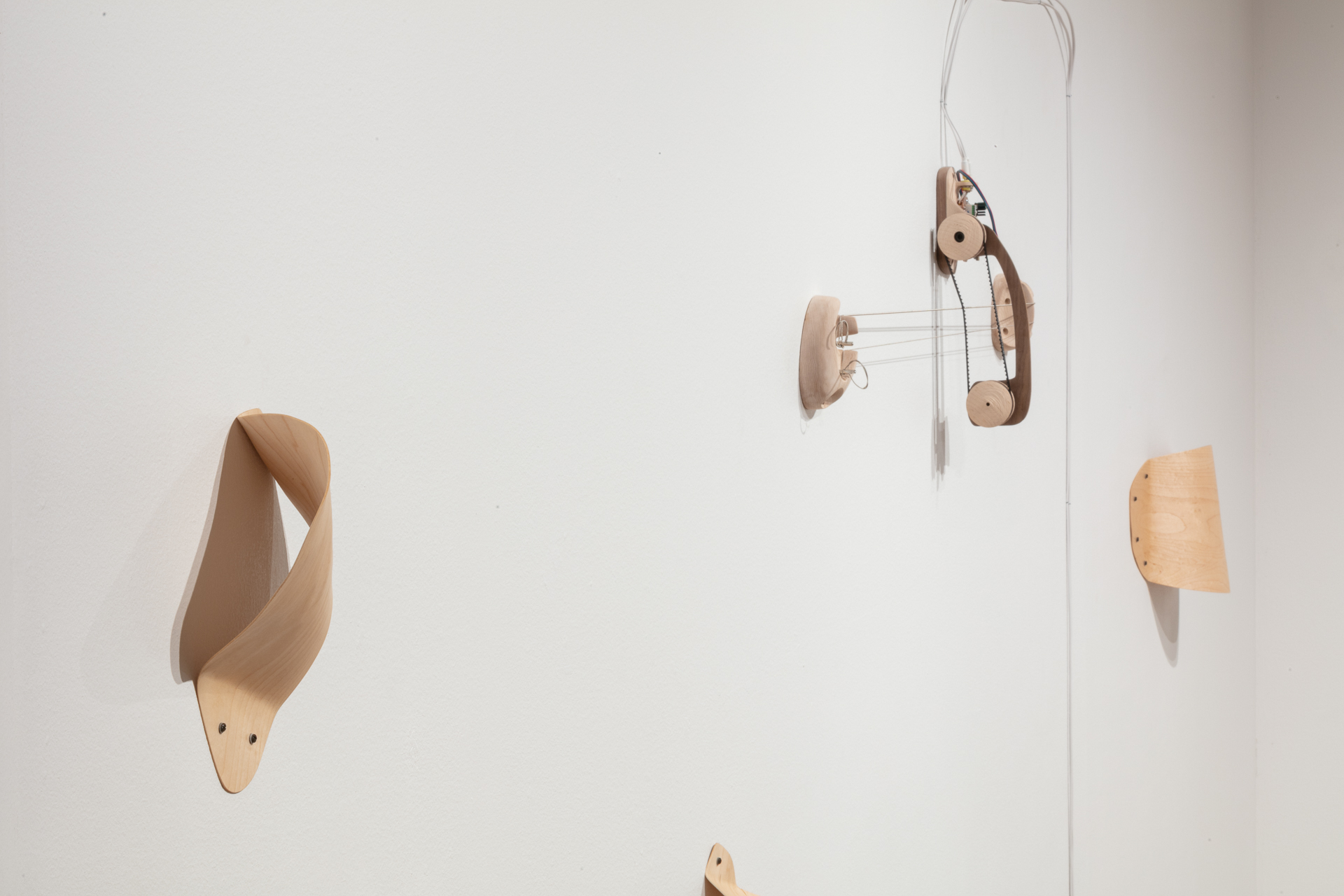
Each instrument has its own autonomous circuit and code loop. The slippage of time between the loops will generate an evolving composition. The modular character of the elements allows the instruments to be installed in any configuration.
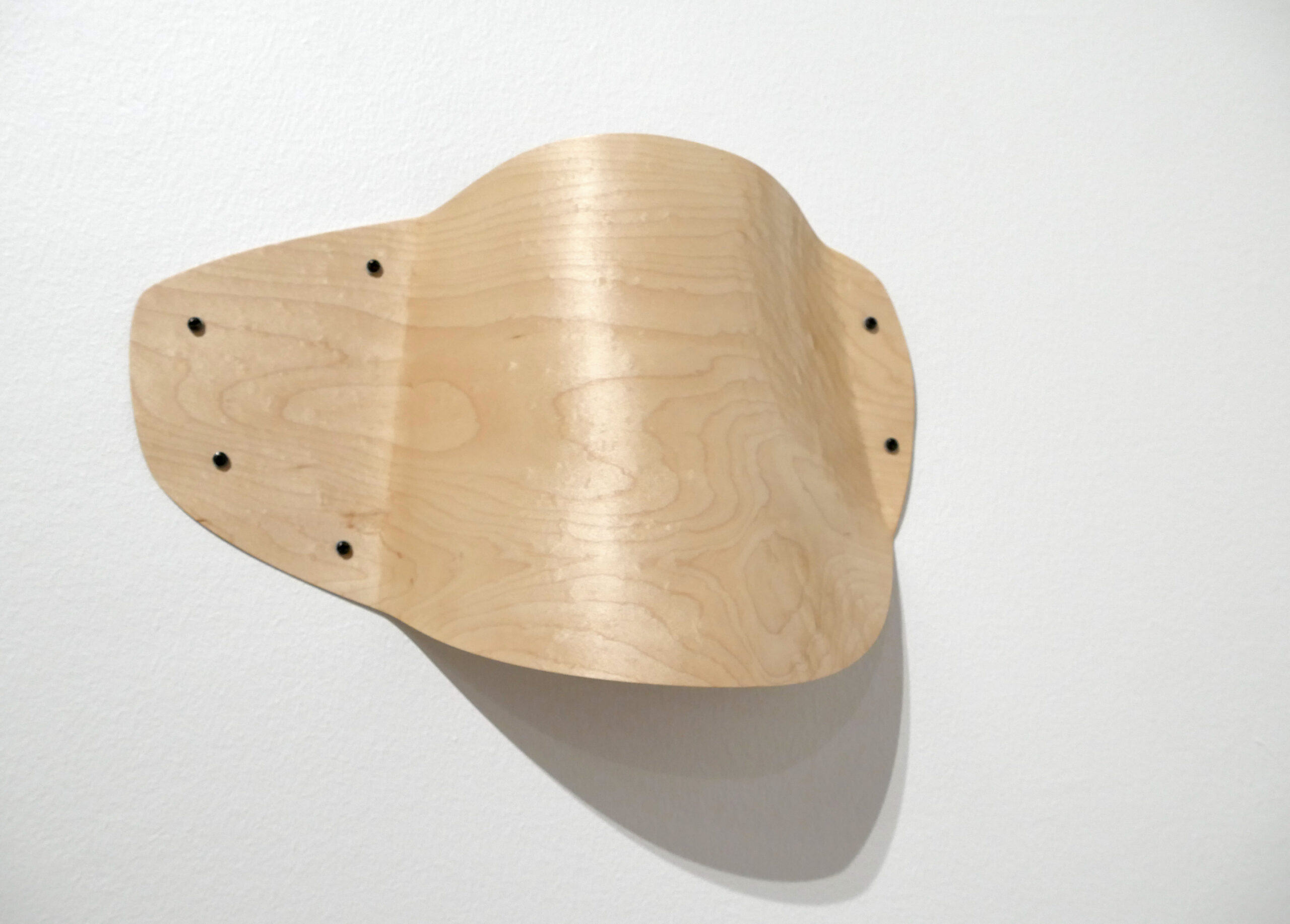
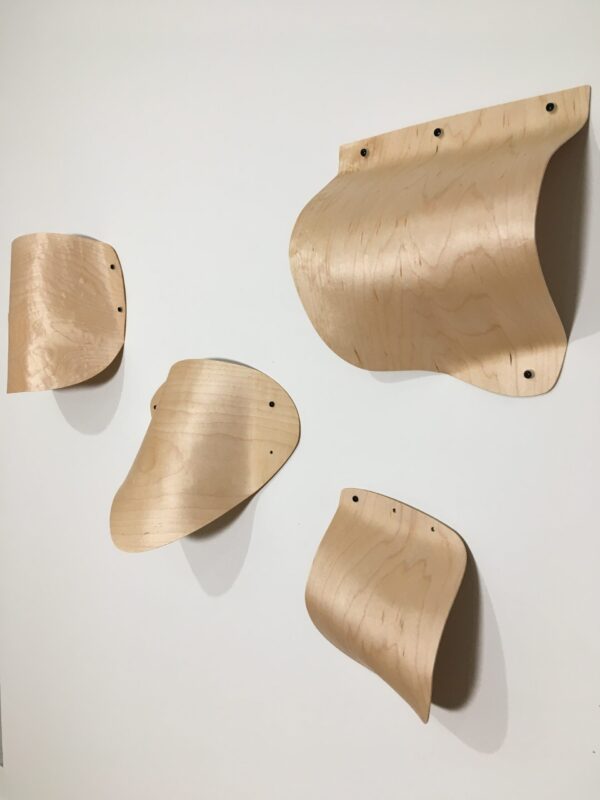
The bent-wood sculptures provide access to more layers of the sonic space. By pressing one’s ear onto the surface of one of the sculptures, one can hear a wider spectrum of harmonics from the instruments. Thin sheets of hard wood, traditionally used for instrument building, and a tight connection to the wall, turns these forms into bone-conducting headphones. This more mechanical way of listening will reveal sounds from the building itself – maybe one can hear sounds from an adjacent room, or HVAC rumbles, or the outside.
All now part of the composition.
some images from the building process:
machining the heads, bridges and bows from hard maple and walnut
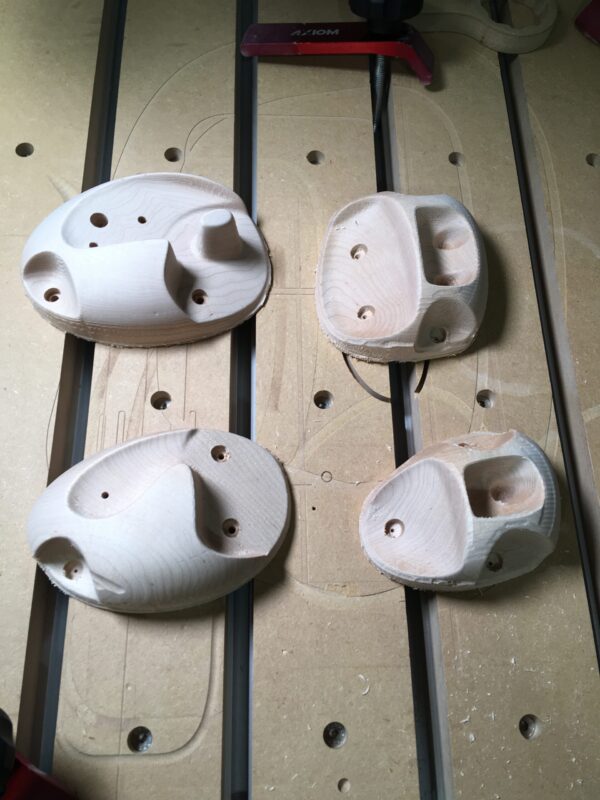
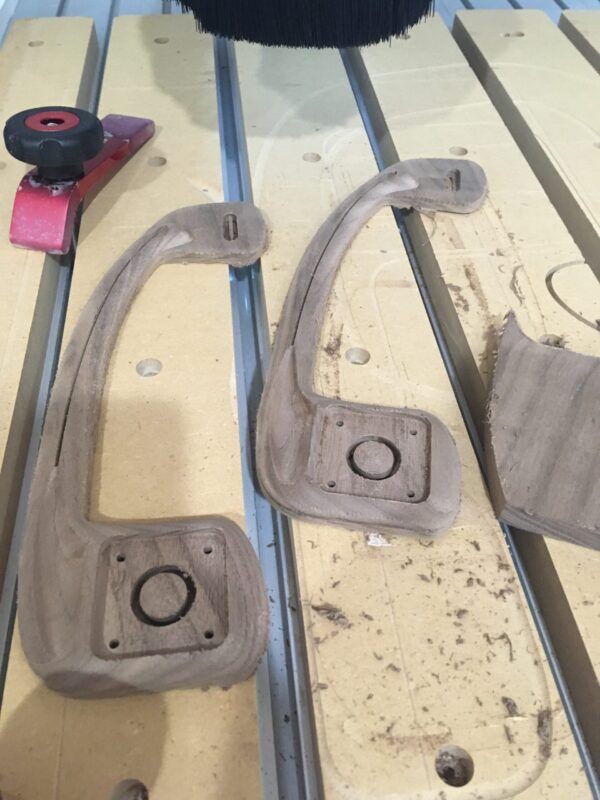
milling the circuit board and finished circuit with arduino nano and stepper motor driver (the good quiet one!)
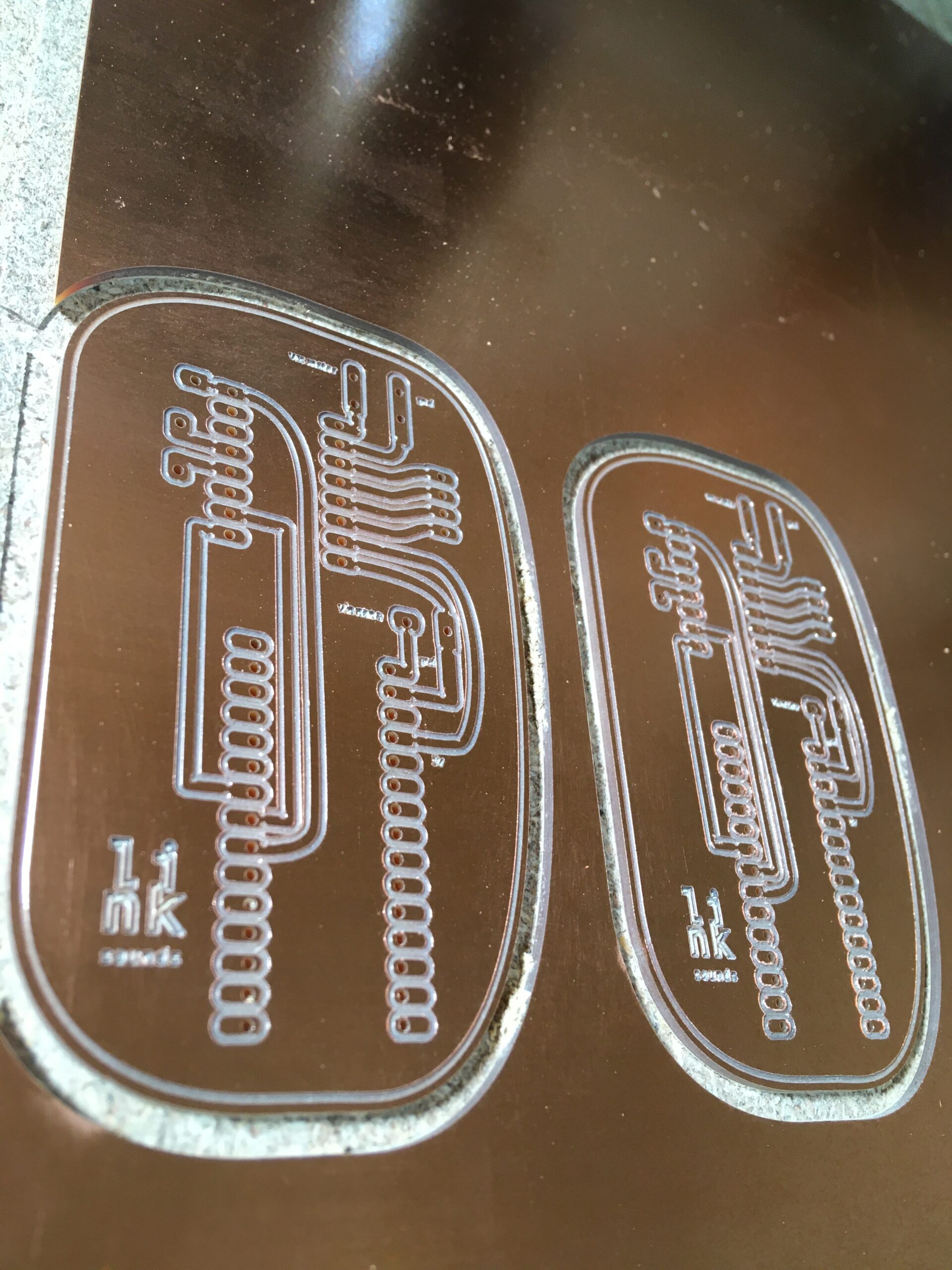
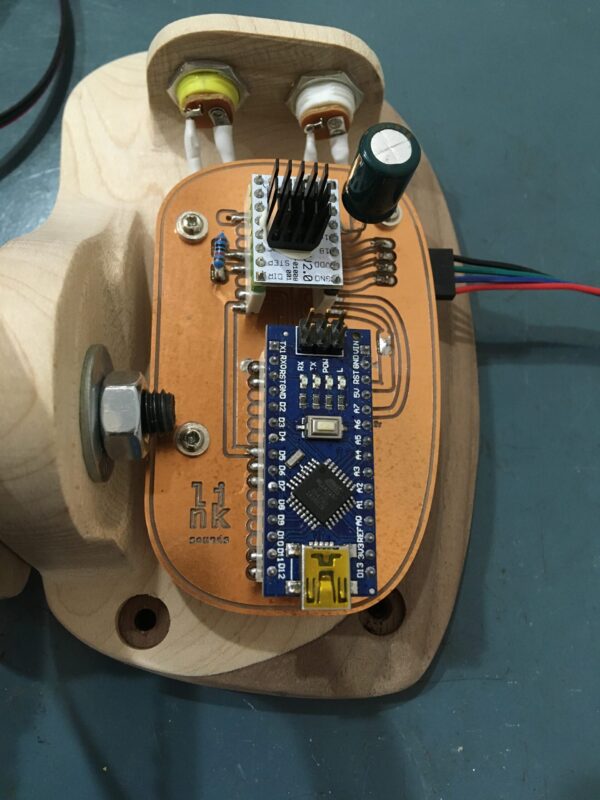
testing the super quiet stepper motor driver tmc2208